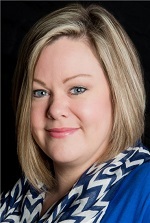
January and February are often tough months for many people. After the excitement of the holidays, the reality of a long, dark winter is hard to accept. It is never more important than now to ensure that your team is feeling engaged and rewarded at work.
The beginning of a new year is a great time to touch base with staff and discuss what their goals are. What things would they like to learn or achieve this year? How can the practice help them achieve their personal career goals? Not every employee has goals so be sure to come to the meeting with some ideas of what might be possible to provide some additional training or responsibility.
Offering the opportunity to build new skills or enhance existing talents with training and professional development is a great way to rejuvenate staff. There’s a bonus in it for you, too, because you’ll end up with more well-rounded staff who are better able to handle a variety of roles.
If you don’t have a system in place already to acknowledge a job well done, there’s no better time to start than the beginning of the year, when many employees struggle with motivation. Reward deserving staffers with sincere, public praise, or offer them something more tangible, such as bonus pay, time off, or tickets to shows and sporting events.
In fact, maybe you want to make it a team outing. Christina and I recently tried out a Salt Cave Spa experience together. It was SO good for us! Lots of laughs and some down time made us much more productive for the rest of the week. It is hard to take time out of our busy schedules, but the reality is this down time often pays off in spades.
Our diet also plays a big part in how we feel. Rather than bringing that box of leftover chocolates from the holidays to the office, try to get your employees back on a healthy track by providing fresh fruit, squeezing juice instead of brewing coffee, or starting up a salad-sharing club. Getting back on track is much easier when it’s a group effort!
At the same time, promoting physical fitness can be a big help in lifting people’s spirits. Whether it’s lunchtime jogs, weekly yoga sessions, or a simple group stretching routine every morning, getting the blood flowing is a great way to shake your staff out of the doldrums.
We have been working hard to clean our home lately. There is a certain show that has inspired me to pick up everything we own and determine whether or not it sparks joy. It turns out that this is a great time of year to purge! Very little is passing the “spark joy” test. The truth is, things start piling up and you stop noticing them. Just like at home, this is a great time of year to schedule some time for your employees to clear away any accumulated junk, piles of paper, and other distractions from their work space. Make it fun event if you want, with a booby prize for the person who tosses the most in the trash.
Finally, a lack of daylight is one reason that many people struggle with their mood once the holidays are done. The solstice has come and gone, and the days are gradually getting longer again, but it’s still tough to see the sun slip below the horizon so early every evening. Consider investing in a few light therapy lamps and let your staff take turns basking in their bright glow. Sometimes, just the acknowledgement that others are feeling the effects from the shorter days too helps everyone to mentally cope with the long, cold winter.

KELLY HRYCUSKO
is the co-founder and managing partner of Simple Innovative Management Ideas (SIMI) Inc. and expert Practice Management contributor for Optik magazine. She can be reached at info@simiinc.com.












